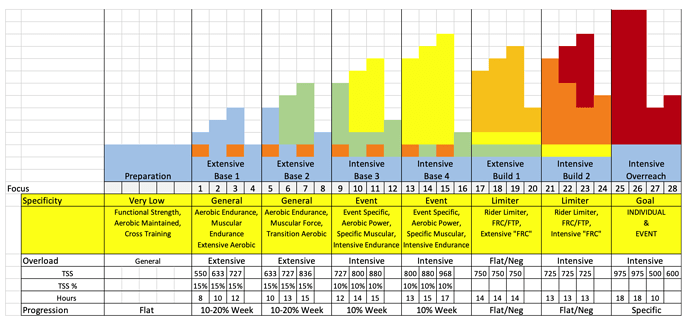TL;DR: Am I going hard enough on my Seiler and Rønnestad? Also ERG mode or something else?
Greetings… I am working VO2max intervals into my weekly plan. Should I be focusing on simply the FTP% or the MaxHR% as my target to determine “am I going hard enough to reap benefits?”
When doing the Rønnestad 30-15 at 125%, my HR is just barely coming up to 140bpm. [ 140/167 ≈ 84% of MaxHR], and the average HR over the last 30/15 is 132bpm [79% of MaxHR].
Also, should I be staying in ERG mode for the structured workouts? Or switching to resistance/slope/someother?
Any kind and constructive pointers, clarifications and thoughts will be appreciated.
Thanks, Dave
Background: I’m a 60 y.o. cyclist, recreational, but always interested in increasing my fitness and efficiency, and I ride with a group of mid-20-to-60+ somethings that are quite fit, and I (usually can) keep up. Per intervals.icu, my FTP is around 245, VO2max around 51; empirically, my MaxHR is around 167, early AM resting HR is low 40s. My W’ is estimated at around 18kJ.
Years back I would do a century per week, and about 200mi/wk. Recently I’ve switched to more intense rides of 30 miles on average, still around 200mi/wk.
I’ve done (I think) my homework on looking at Seiler, Rønnestad, Billat and what their studies showed. I used Xert for two years and have a basic understanding of the models…
My -understanding- of Rønnestad’s protocol is that it is a way to achieve VO2max load on your system yet make it more repeatable, in the same sense that Sweet Spot/OU work allows you to accumulate load comparable (not =) to FTP-level-strain, yet keep it more repeatable.
I’ve done my base work and SS training so far this spring, and have started moving into the VO2max portion.


